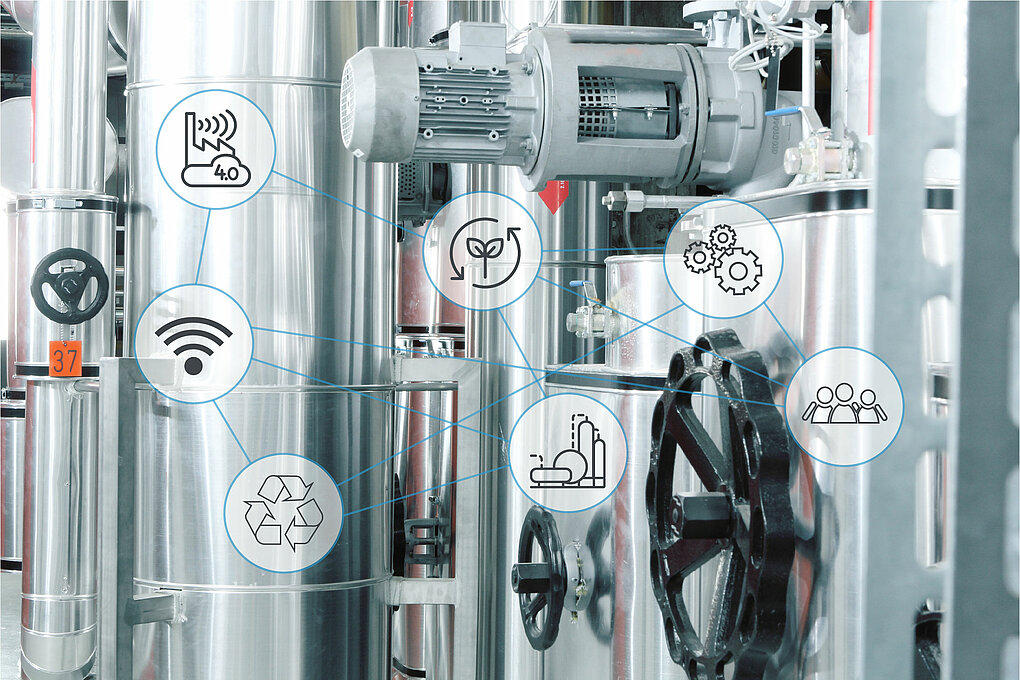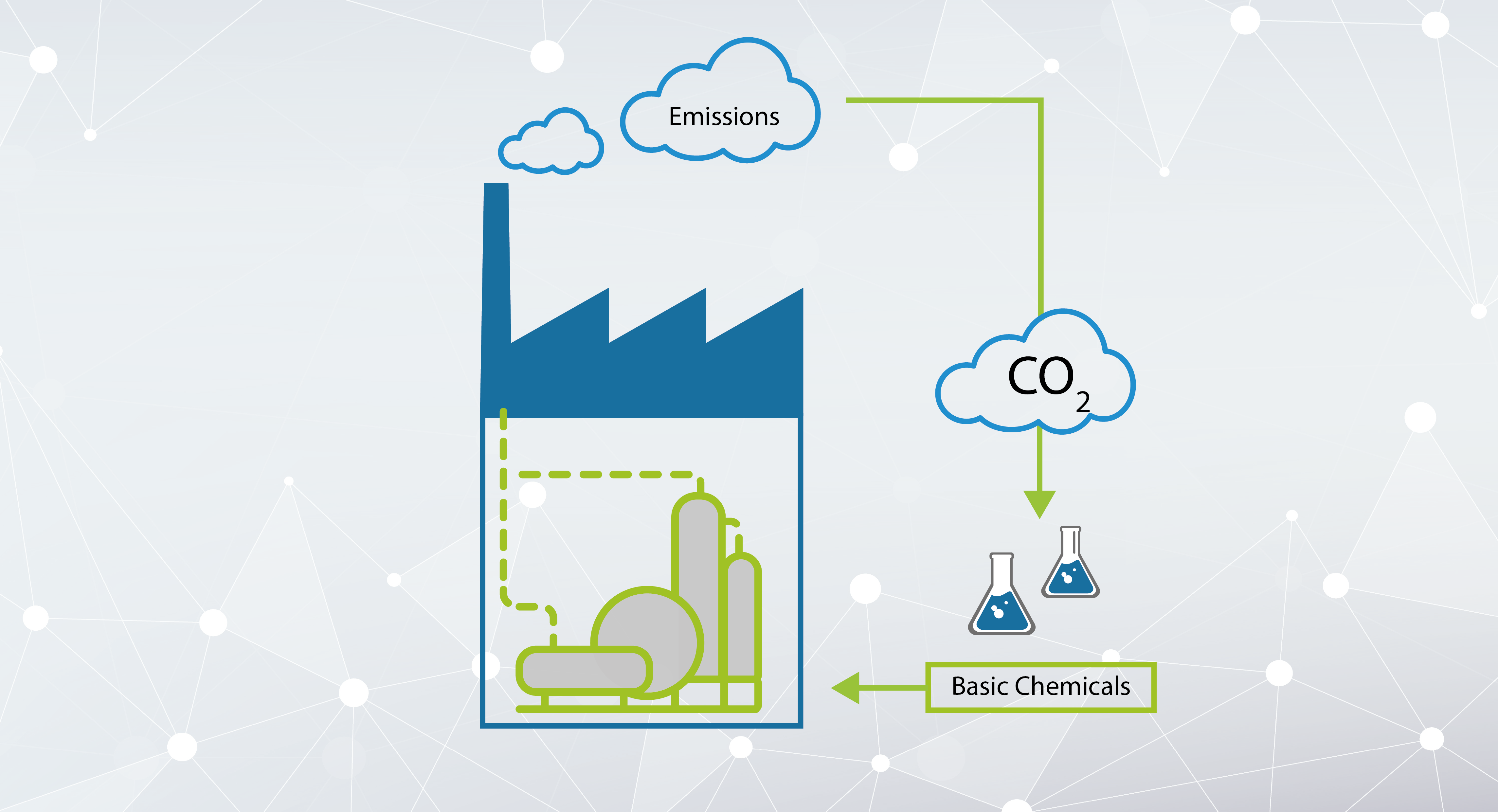- DE
- EN

Small and medium-sized companies in the chemical industry in particular are faced with high costs for natural resources: Nearly 51.3 percent of total costs were attributable to material and energy costs in 2017. In comparison, personnel costs amounted to only 15 percent.*
Destatis (2019): Produzierendes Gewerbe – Kostenstruktur der Unternehmen des Verarbeitenden Gewerbes sowie des Bergbaus und der Gewinnung von Steinen und Erden, subject-matter series 4 vol. 4.3 (online). Statistisches Bundesamt (accessed on: 03/01/2022), (p. 287).
 © PantherMedia / PeterHofstetter (YAYMicro)In chemical production, there are numerous starting points for reducing the amount of material and energy used. Costs can be saved by reducing the quantities of materials and energy used in the production process. In addition to the resulting ecological benefits for the environment and climate, such as the conservation of natural resources and the reduction of environmental pollution, there are also economic benefits, such as the preservation and increase of a company's competitiveness or lower dependencies on fluctuating raw material prices.
© PantherMedia / PeterHofstetter (YAYMicro)In chemical production, there are numerous starting points for reducing the amount of material and energy used. Costs can be saved by reducing the quantities of materials and energy used in the production process. In addition to the resulting ecological benefits for the environment and climate, such as the conservation of natural resources and the reduction of environmental pollution, there are also economic benefits, such as the preservation and increase of a company's competitiveness or lower dependencies on fluctuating raw material prices.*
VDI 4800 sheet 1:2016-02: Verein Deutscher Ingenieure e.V., Ressourceneffizienz – Methodische Grundlagen, Prinzipien und Strategien. Beuth Verlag GmbH, Berlin, (p. 11).
In the past, various strategies and measures have already been implemented to increase resource efficiency in the chemical industry. The focus here was on the goal of reducing material and energy volumes. In a survey commissioned by the VDI Center for Resource Efficiency in 2015, 79.4 percent of the 120 companies surveyed from the chemical industry stated that the resource potential in their industry had not yet been exhausted. In addition, 50.3 percent said they knew of companies in their industry that had achieved competitive advantages through measures to increase resource efficiency.*
Wecus, A. und Willeke, K. (2015): Status quo der Ressourceneffizienz im Mittelstand. prolytics market research & VDI Zentrum Ressourceneffizienz, Berlin, (p. 22f).
Many companies in the chemical industry  © VDI ZREUsing CO2 as a material is an important step towards climate neutralityhave recognised that increasing resource efficiency can also positively change the public's perception of the company: Another reason to identify efficiency potential and develop measures to reduce resource consumption.
© VDI ZREUsing CO2 as a material is an important step towards climate neutralityhave recognised that increasing resource efficiency can also positively change the public's perception of the company: Another reason to identify efficiency potential and develop measures to reduce resource consumption.
Large companies in the chemical industry often have special departments and a fixed budget for this important task. Small and medium-sized enterprises (SMEs), on the other hand, often lack such resources.
Get in touch for further information or help regarding the topic of "Chemical and Process Engineering".
Tel.: +49 (0)30 2759506-505
E-Mail: zre-industrie@vdi.de